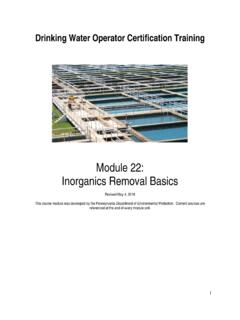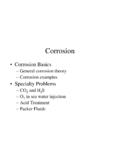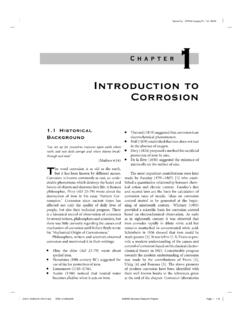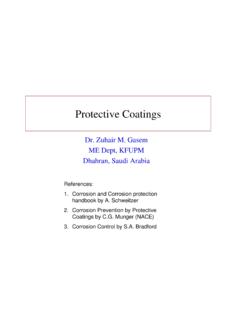Transcription of Last updated: September Pipeline Basics SpeciThcs …
1 Pipeline Basics & Specifics about natural Gas PipelinesPipeline Briefing Paper #2 Last updated: September 2015 Page 1 Introduction to Pipelines There are over million miles of fuel pipelines in the United States. Who regulates pipelines and under what set of regulations depends on what the Pipeline carries, how much it carries, and where it goes. Pipelines are categorized into several fuel pipelines are either: 1) Hazardous Liquid pipelines carrying crude oil and refined fuels such as gasoline, diesel and jet fuel. They also carry highly volatile liquids, such as butane, ethane, propane, which will form vapor clouds if released to the atmosphere, and anhy-drous ) natural Gas pipelines carrying natural gas, the principal constituent of which is on where they are in a transportation system all natural gas pipelines are either: Transmission pipelines the large lines (typically 6-48 inches in diameter) that move gas long distances around the country, often at high pressures (typically 200 1500 psi); or Distribution pipelines are a system of mains and service lines that deliver natural gas to our individual homes and businesses.
2 They operate at a relatively low pressure; or Gathering pipelines transporting gas away from the point of production (well pad) to another facility for further refinement or to transmission pipelines; or Production Lines the pipes and equipment, normally near the wellhead, used to produce and prepare the gas for transport. about 200,000 miles of onshore and offshore Haz-ardous Liquid pipelines; about 320,000 miles of onshore and offshore Gas Transmission and Gathering pipelines; about 2,170,000 miles of natural Gas Distribution mains and service pipelinesTHE CURRENT Pipeline SYSTEMP ipeline Basics & Specifics about natural Gas PipelinesPipeline Briefing Paper #2 Page 2 Pipeline Safety TrustFinally, (and you d think this one would be simpler) pipelines are divided for jurisdictional purposes into: Interstate pipelines Intrastate pipelines In most cases, you can determine whether a Pipeline is inter- or intra- state by finding out if it goes beyond the borders of a single state.
3 If it leaves the state, it should be interstate; if it stays within one state, it should be intrastate. But sometimes this description is accurate, and sometimes it isn t. Some large pipelines that cross state boundaries are classified as intrastate if the Pipeline ownership changes at the state line. For example, the same gas transmission Pipeline designated as interstate in Oregon, turns into an intrastate line when it hits California. Conversely, a transmission line that does not carry product outside one state can be considered interstate if the operator chooses to get its tariff approved by the Federal Energy Regulatory Commission (FERC), which governs tariffs on interstate transmission lines. Unfortunately, even something seemingly so simple as determining whether a particular Pipeline is a production or gathering line, or a gathering or transmission line, is not so simple under existing regula-tory definitions, and they allow for some degree of choice by an operator in how a line is designated, and therefore how much of it is regulated as a particular type of line.
4 A couple other terms that are used frequently when talking about natural gas pipelines need to be de-fined. Unfortunately these terms are used in many different ways and standard definitions do not exist in federal regulations. They include:The gas Pipeline transportation system from production to consumptionPipeline Basics & Specifics about natural Gas PipelinesPipeline Briefing Paper #2 Page 3 Pipeline Safety TrustWet Gas and Dry Gas - natural gas is a gas comprised of multiple hydrocarbons, the most prevalent being methane. The higher the methane concentration, the drier the gas is. Other minor components include evaporated liquids like ethane, butane and pentane, which are collectively referred to as natural gas liquids (NGLs), or condensates. The higher the percentage of NGL s, the wetter the gas is.
5 There are no definitions in the federal regulations that define at what point gas is considered wet or Gas Normally this refers to natural gas that contains an appreciable quantity of hydrogen sul-fide. Hydrogen sulfide is a concern because it is extremely poisonous and can cause health problems at high enough concentrations. When mixed with water it also becomes extremely acidic causing corro-sion problems for pipelines. How natural Gas Pipelines WorkNatural gas is moved through pipelines as a result of a series of compressors creating pressure differen-tials the gas flows from an area of high pressure to an area of relatively lower pressure. Compressors are powered by electric or natural gas fired engines that compress or squeeze incoming gas and push it out at a higher pressure.
6 As one would expect compressor stations for large transmission lines are much bigger than the compressors used to move the gas through the small distribution lines to our homes. Some gathering systems do not need compressors because the pressure of the gas coming out of the wells is enough to move the gas through the gathering gas is compressed in transmission pipelines to pressures typically ranging from 500 to 1400 pounds of pressure per square inch. Compressor stations on transmission pipelines are generally built every 50 to 100 miles along the length of a transmission Pipeline , allowing pressure to be increased as needed to keep the gas moving. Some gas transmission pipelines are bi-directional meaning gas can be coming from both ends of the Pipeline , and depending on where gas is removed and where the compressors create the pressure differential, gas may flow either direction.
7 One example is William s Northwest Pipeline that comes past us here in Bellingham. It accepts gas from Canada to the north and from the Rocky Mountain region to the south. These bi-directional pipelines boast of greater flex-ibility in both supply and price to gas transmission pipelines are looped, which just means there are two or more pipelines run-ning in parallel to each other normally in the same right of way. Looping provides increased storage of gas in the system to meet demands during peak use periods. Gas Pipeline operators monitor for any problems and handle the flow of gas through the Pipeline us-ing a Supervisory control and Data Acquisition system (SCADA). A SCADA is a Pipeline computer system designed to gather information such as flow rate through the Pipeline , operational status, pres-sure, and temperature readings.
8 This information allows Pipeline operators to know what is happening along the Pipeline , and allows quicker reactions for normal operations and to equipment malfunctions and releases. Some SCADA systems also incorporate the ability to remotely operate certain equip-ment, including compressors and valves, allowing operators in a control center to adjust flow rates in the Pipeline as well as to isolate certain sections of a Pipeline . Pipeline Basics & Specifics about natural Gas PipelinesPipeline Briefing Paper #2 Page 4 Pipeline Safety TrustThe city gate is where a transmission system feeds into a lower pressure distribution system that brings natural gas directly to homes and businesses. At the city gate the pressure of the gas is reduced, and it is normally the location where odorant (typically mercaptan) is added to the gas, giving it the characteristic smell of rotten eggs so leaks can be detected.
9 While transmission pipelines may operate at pressures over 1000 psi, distribution systems operate at much lower pressures. Some gas mains (2 to 24 inches in diameter) in a distribution system may operate up to 200 psi, but the small service lines that deliver gas to individual homes are typically well under 10 the gas is delivered to the local gas utility at the city gate, the gas utility s control center moni-tors flow rates and pressures at various points in its system. The operators must ensure that the gas reaches each customer with sufficient flow rate and pressure to fuel equipment and appliances. They also ensure that the pressure stays below the maximum pressure for each segment of the system. As gas flows through the system, regulators control the flow from higher to lower pressures.
10 If a regulator senses that the pressure has dropped below a set point it will open accordingly to allow more gas to flow. Conversely, when pressure rises above a set point, the regulator will close to adjust. As an added safety feature, relief valves are installed on pipelines to vent gas if a line becomes over pressured and the regulators of natural Gas PipelinesThe construction phase of Pipeline installation is a critically impor-tant time to ensure the long term integrity of the Pipeline . Below are a few of the issues dealt with during the construction phase that affect Pipeline safety. Some gathering and most production lines are not required to follow these standards. MaterialsMost transmission and gathering pipelines are now made out of high carbon steel.










